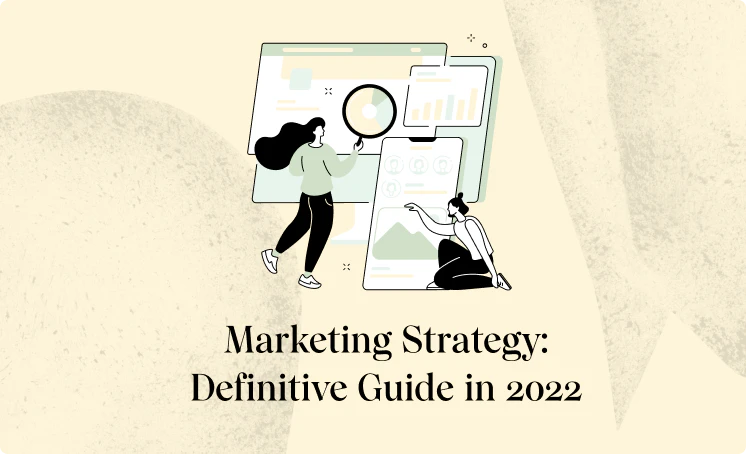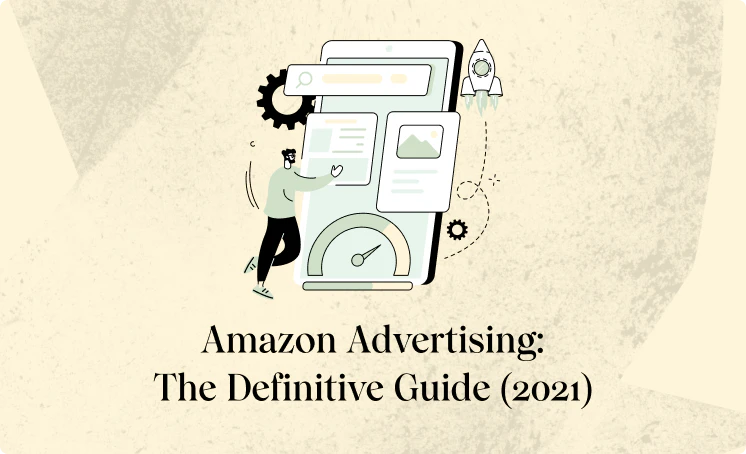Introduction
If you’re using PPCs ads on Amazon, you may be familiar with the acronym ACoS.
But do you really know how to calculate your ACoS, or how to set a target ACoS?
If not, in this article we’ll teach you how.
Better yet, we’ll tell you 10 ways to improve your ACoS so you can hit your target.
Let’s get started.
What is Amazon ACoS?
ACoS, or Advertising Costs of Sales, is the calculation sellers and vendors use to determine how much they are earning from their ad spend.
ACoS is specific to Amazon, though it’s beginning to gain popularity on other PPC platforms.
Why Is Amazon ACoS Important?
ACoS is a vital metric to the success of your Amazon business.
You have to know how much each sale is costing you otherwise you cannot be sure you’re maintaining profitability, or at least breaking even at the beginning.
Just know that when starting out with Amazon PPC ads, your ACoS will probably be higher than your target.
It takes time to develop a working strategy, but if you follow the advice later in this guide, you’ll be set in no time.
What’s the Difference Between ACoS and ROAS?
ACoS and ROAS are different ways to calculate sales against ad spend.
ACoS tells you how much money you’re putting toward your ads to get a sale.
ROAS will show you how much money you’re making from each dollar you’ve spent on ads.
Two-sides of the same coin.
As noted, ACoS is currently an Amazon-specific metric while ROAS is a Google-specific metric.
What Is the Average ACoS?
An average of about 30% ACoS is found across different categories on Amazon.
But there is a wide variety reported depending on the category.
LOW ACOS INCREASES PROFITABILITY
When your strategy is strictly to be as profitable as you can be, you focus on lowering your ACoS.
Ultimately, this is the goal of most businesses.
But remember that when you are new to the platform, or introducing a new product, that you are building a PPC strategy and this won’t be immediate.
A good target would be between 15-20%, but it will depend on your specific product more than your category.
HIGH ACOS INCREASES VISIBILITY
If your goal is to gain exposure, you may be willing to have a higher ACoS.
Sellers focusing on brand building may opt to have less profit in the beginning in the hopes to gain market share and have an audience they can double down on later.
Another reason you may want to accept a higher ACoS is if you need to unload a product that isn’t selling or may be expiring.
In that case, lower profits are better than no profits and sitting products.
How to Calculate Amazon ACoS

Calculating your ACoS is easy to do. Just use the ACoS formula below.
ACoS = Ad Spend / Ad Revenue * 100
Now let’s look at a simple example.
Ad Spend: $1000
Ad Revenue: $2000
ACoS = 1000/2000*100 = 50
This means your ACoS is 50% or for every $1 you spend on ads, you make $2.
What Is Break-Even Amazon ACoS?
Your break-even ACoS is where your ad spend is equal to your profit margin, or the point where you are not making any money, but also aren’t losing any money on your sales from advertising.
To understand break-even ACoS, you have to know exactly what your profit margin is after all your costs are accounted for.
Knowing your ACoS only matters if you can compare it against your margins.
Let’s say you sell doormats for $18, and after costs are accounted for, you profit $10 on every sale.
If we take the ACoS of 50% (or for every dollar spent you earn two), your break-even ACoS would be $5 for that product.
Spending more than $5 for a sale on your doormat would make you unprofitable.
Understand Your Target Amazon ACoS
Since you probably aren’t running a business to break-even, you need to establish a target ACoS.
Or what profit margin are you trying to maintain after ad costs.
When it comes to bidding, you’ll need to consider what your conversion rate is for that product to determine how much you can spend to achieve your ACoS.
10 Ways to Optimize Your ACoS on Amazon
Now that you know how to calculate your ACoS and how to set a target, you need to know what you can do, and what you need to monitor, to hit your goal.
Let’s look at 10 ways you can optimize your ACoS.
UTILIZE EXACT MATCH KEYWORDS
Exact match keywords allow you to precisely target a specific audience most likely to buy your product.
When you use broad search terms, or sometimes even phrase match search terms, you can cast too wide of a net that may show your product in more search results, but will also increase competition.
UTILIZE EXACT MATCH KEYWORDS
Exact match keywords allow you to precisely target a specific audience most likely to buy your product.
When you use broad search terms, or sometimes even phrase match search terms, you can cast too wide of a net that may show your product in more search results, but will also increase competition.
If I type “blue cotton throw blanket for couch” into the search bar, I know exactly what I am looking for and am more likely to follow through on the purchase.
Whereas if I type in “throw blanket” I’m going to have to sift through thousands of listings of various colors and sizes.
I may change my mind and go for a different color, or maybe get too overwhelmed by the decisions and not buy at all.
Exact match keywords show high intent to purchase.
The customer knows what they’re after and it will limit how many competitors you’re up against.
To find good exact match keyword examples to test you’ll need to look at your ad reports.
You’ll want to identify what keywords are performing best and move them to their own campaigns.
You will also want to keep testing new keywords in case there’s something you’re missing or a keyword that was doing well suddenly has a spike in competition.
UTILIZE NEGATIVE KEYWORDS
Negative keywords don’t always get the attention they deserve.
But they can dramatically help you improve your ACoS by refining where your budget is going.
Setting negative keywords will help you not waste your ad spend on keywords that you know don’t perform well for your products.
Remember that negative keywords have to be exact match or phrase match.
Some negative keywords you can come up with on your own. For example, if you sell couch covers in brown, green, and gray and run ads for “couch cover”, you may want to set a negative keyword of “blue couch cover”.
The other way you can find good negative keywords is to again review your ad reports and look for:
- Low CTR non-converters
- High spend non-converters
- High click non-converters
You can always adjust your negative keywords so if you are on the fence about one, you can give it a chance and add it as a negative keyword later.
Another key reason to add negative keywords to improve your ACoS is keyword cannibalization.
You don’t want to be wasting your ad spend by competing against yourself for similar products.
Keep in mind your limited keywords are limited to 250 bytes though, so you can’t include everything.
BE PROACTIVE WITH BID MANAGEMENT
The set it and forget about it bid management style is not doing any favors for your ACoS.
It’s important to stay on top of your bids to proactively manage your budget.
You’ll primarily want to focus on the number of sales and allocate your budget on what’s working.
Does it make sense to set the same ad budget for a snow sled and a pool float in the middle of summer?
Of course not!
That’s an obvious example, but the reasoning stands across all products.
Spend your budget where your sales are while you can.
If a product is on a hot streak, don’t be scared to push more ad spend to it, as long as you have the inventory.
The pandemic caused a dramatic increase in game sales. Odds are that the above game targeted toward team building is doing well and has increased advertising to their product accordingly.
On the opposite end, if you are monitoring your campaigns and see a dip, be ready to scale back until you can figure out the reason.
Don’t just allocate a budget to each campaign every month and hope for the best.
High-selling products will fluctuate depending on trending topics, seasons, and competition.
You’ve got to stay on top of what’s working so you can take advantage of hot listings and optimize your ACoS.
OPTIMIZE YOUR PRODUCT TITLES
The product title is the only copy Amazon shoppers have to learn about your product to make a click-through decision.
Your product titles are capped at 200 characters so you won’t be able to fit every relevant keyword in, nor would you want to. (Mobile will only show about 70 characters.)
Be sure to put your most relevant keyword at the front of your listing’s title, aim for using your best long-tail 5-7 word keyword at the beginning of your title.
Then focus on making the rest of your title user-friendly.
Clearly explain the product in layman’s terms, not using confusing jargon or cramming every feature detail in the title in a way that doesn’t make sense when scanning.
Amazon recommends you include your brand name, product type, the material your product is made from, color, and size when relevant.
It’s best to try to follow Amazon guidelines, but you should also test using words to demonstrate quality or a top-feature like “premium cotton” in your title to entice your customers.
OPTIMIZE YOUR PRODUCT LISTINGS
So, you optimized your product title and your customers are clicking-through, but now what?
Now you need to focus on your bullets, product descriptions, and images.
Bullets
The most-read copy after your title is your bullet points.
Your first bullet point needs to be your strongest selling point so that the potential customer wants to keep reading.
You want to make your bullets easy to scan and explicitly benefits-focused.
Some sellers have found using all-capitals to highlight key features to be useful, but don’t overdo it or they lose their emphasis.
You can use keywords in your bullets, but you don’t want your bullets to be keyword-focused. The goal of the bullets is to give your customers all the information they need to buy.
Description
Your product description is the block of text that is displayed under your images and bullets.
When writing a description, be sure to add your keywords, but add them in cohesive, short sentences that make it easy for your customer to read.
Use your description to answer any questions the bullets wouldn’t answer for the reader.
Images
If we’re talking about optimizing product pages, we cannot overlook product images.
Your images have to be high-resolution and look good when customers use the zoom feature.
Amazon requires your images to be 1,600 pixels at a minimum on the longest side and 500 pixels on the shorter side.
The main product image must be on a white background and only feature your product, no props or text.
But your additional images on your product page should highlight your product in different ways.
Using lifestyle images and showing your product in use helps your customer see how your product could fit into their lives.
Creating images that use text and graphics to highlight product features can be helpful to shoppers, especially if they are not immediately visible or your product is technical.
INCREASE YOUR CLICK-THROUGH RATE (CTR)
An improved click-through rate can help improve your ACoS if your conversion rate improves along with it.
When optimizing your click-through rate you’ll want to carefully monitor your conversion rate to be sure your efforts aren’t hurting your sales.
For instance, not narrowing your keywords to perfectly fit your product might get you more eyes on your listings, but many of those customers won’t end up purchasing.
The key is to increase clicks from qualified buyers.
Every click costs you money and if those clicks aren’t leading to sales then that money is wasted.
The keywords you choose, your product title, your main image, your ratings/reviews, and your delivery method are the pieces you can control to pre-qualify your customers before the click.
You can also control your price to some extent, but you don’t want to rely on continually dropping your price to get customers interested.
The two pieces you have full control of to get more clicks to your product page you’ll want to have keywords that closely match your audience’s needs in your title and a clear high-resolution image of your product as your main photo.
Being enrolled in Amazon FBA will make your products Prime eligible, which is another customer motivator.
OPTIMIZE YOUR COST PER CLICK (CPC)
It’s important to understand that CPC is not the same as your bid.
Some ad placements, like the top of the search results, may result in higher conversions. Even though those placements require higher bids, they still lower ACoS through the sales generated.
To optimize your cost per click you’ll need to:
- Test keywords
- Test placements
- Test bids
Amazon PPC ads are like all other marketing, to get the best results you’ll need to test and measure your efforts.
As recommended above, you’ll want to build campaigns around exact match keywords that perform well and you’ll want to set negative keywords to avoid wasted spend.
You’ll want to test if it’s worth the higher bid costs to place your product at the top of the search, or if you can obtain a better ACoS through the rest of the search placement.
Optimizing those three pieces will result in the best ACoS for your product.
IMPROVE YOUR CONVERSION RATE (CVR)
Where your click-through rate is dependent on how your product appears in the search result, your conversion rate is dependent on your product details page.
We’ve covered how to optimize your title, your bullets, and description, and your images, but now let’s talk about the other pieces of your product page that play a major role in your conversion rate.
- Questions and Answers
- Reviews
- A+ Content
You should aim to always respond promptly to questions asked on your product page. It increases customers’ trust in your brand and product to know that the company cares about helping prospective buyers.
And good customer service also helps generate positive feedback.
Even though we know not all of the reviews on Amazon are genuine, shoppers trust the reviews they see.
The best way to improve your reviews is to provide great customer service in addition to a great product.
If your product meets the customers’ needs, they may not all come back to leave you a review.
But a customer that has a problem with the product and an issue with customer service?
They are much more likely to go write a negative review. Keep this in mind when responding to and interacting with your customers.
Finally, if you are a registered brand, don’t forget to set up your A+ content.
A+ content gives you additional control over your product page through advanced imagery, videos, and even comparison charts to feature other products your customers may want from your brand to help them from going to a competitor.
It’s something only available to brands to help set your product pages apart and Amazon says it increases conversions 3-10%.
CHOOSE THE RIGHT TIME TO ADVERTISE
Amazon allows you to determine the times/days your ads are displayed.
Choosing to save your ad spend for specific timeframes can help you to improve your ACoS.
You’ll want to test different times and days, but to start, you’ll want to consider the habits of your target audience.
If your target audience is business professionals who work Monday through Friday, 9:00 to 5:00, then you will want to try running your ads in the evenings first.
But if you are targeting stay-at-home moms who are thinking of things they need around the house as they go about their day-to-day routines, you’d want to test running your ads in the daytime hours instead.
This is why the importance of audience research cannot be understated.
You’ll see more immediate, more impactful results from things like keywords and bid management, so testing times/days should come after you’ve perfected those pieces.
UTILIZE AMAZON PPC TOOLS
There are tons of Amazon PPC tools on the market to help you hit your target ACoS.
There are tools for Amazon PPC tools like:
The all-in-one tools offer great support and a streamlined experience, but that comes at a cost. There are no free comprehensive Amazon PPC tools so if you’re on a budget or just starting, this may not be the best option for you.
When you have multiple listings going, or if you are trying to manage multiple brands, it can be too much to keep up with to monitor and optimize every part manually.
These tools can help from the research and development phase through testing and improving already successful product listings.
Other Factors That May Alter Amazon ACoS
The formula for calculating ACoS doesn’t change, but other circumstances do. Therefore, it’s essential to understand all the factors that may be impacting your ACoS before making major changes to your campaigns.
Attribution Windows
With Amazon PPC advertising, you have to pay close attention to attribution.
Not only do the attribution windows change depending on the type of ad, but how attribution is given also gets confusing.
Amazon states that standard attribution is 7 days for Sponsored Product Ads and 14 days for Sponsored Brand Ads. So, if a customer clicks a Sponsored Product Ad but then doesn’t actually purchase until 10 days later, it will not be attributed to your ad.
It’s also important to note that Amazon operates on the last-click model, meaning the last ad the customer clicks will get credit for the sale no matter what ad might have actually introduced them to your product. Alongside the fact that if you are a brand, and a customer clicks an ad, then purchases any product from your brand, that clicked ad will be credited.
Due to this, you will want to consider your overall revenue alongside your ACoS.
Average Selling Price
Of course, the average selling price of your products will play a major role in your ACoS. The higher the sale price, the better your ACoS.
Wouldn’t it make sense then to keep your selling price high? Well, not necessarily.
Your selling price has to be driven by more than what your hope to profit from each sale.
When determining your current product price, you have to consider what your competitors are selling similar products for and what the market is willing to pay. If you’ve overpriced your products, you could have amazing profit margins but very few sales, deflating your overall revenue.
You may actually find that lowering your product’s price could result in more sales, which would also lower your ACoS.
Seasonal Fluctuations
Seasonal fluctuations don’t only affect seasonal products. Everyone in ecommerce knows that Q4 sales trample every other quarter for most products.
But that also means that more brands are increasing their advertising budgets to capture as many of those sales as possible.
This rush of both sales and advertisers will likely have a significant impact on your ACoS.
Established advertisers are generally willing to pay the higher advertising costs during this period because the revenue justifies it. But if you are new to advertising on Amazon PPC and start around the major shopping days, just know that your ACoS is probably not indicative of what it will be for the rest of the year.
A Better Way to Manage Your ACoS and PPC Ads
It’s hard to know what’s working right now when you’re only managing products within the same category.
You may be missing out on strategies that could drastically improve your ACoS.
If you’ve tried to hit your target ACoS on your own, but can’t quite get there, let us help.
We manage brands across many industries and likely have ideas that could help that you haven’t tried yet.
You don’t have to figure it all out on your own, check out our Amazon services and get your complimentary marketing proposal.
The Amazon marketplace provides levels of traffic you don’t want your brand to miss out on.
Final Thoughts
When you’re selling on Amazon, you have to know and track your ACoS or risk losing profitability.
While there is no standard Amazon ACoS across the board, you know that 15-20% is a good goal to aim for.
If you’re falling short of your target ACoS, you’ll want to make sure you’re optimizing your product listings and metrics, as well as testing new strategies.
When first starting with Amazon PPC, remember that it’s a testing and learning process with every product.














.webp)

.webp)








.webp)









































.webp)






